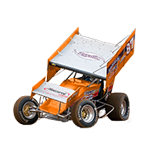 Adobe Community
Adobe Community
- Home
- InDesign
- Discussions
- Actual and effective ppi for print documents
- Actual and effective ppi for print documents
Actual and effective ppi for print documents
Copy link to clipboard
Copied
Hey everyone! Im about to send in a document for print but I need some clarity before I do. Some of my images are at an actual ppi of 72 and the effective ppi at like 240 or so. Will I have quality issues if i send to print without changing that actual ppi to 300 or above? or does it really only rely on the effective ppi?
Copy link to clipboard
Copied
Only the Effective PPI is important for print quality.
Copy link to clipboard
Copied
Generally, resolution is inversely proportionate to size. When an image is sized up, resolution goes down and vice-versa. So, with resolution always dependent on size, applying the term "actual" as opposed to "effective" is misleading. InDesign's "effective" resolution is the actual output resolution, and what you're calling "actual" would be better described as "original" resolution; referring to the resolution value that was in effect at the size of the image in the moment when it was first placed on the page, before it was subject to any scaling in the InDesign editing environment.
On a side note, a resolution of 300 ppi is not necessarily required for print. Many output methods and scenarios tolerate lower resolutions, depending on many other variables. The 300 ppi rule-of-thumb came about as a dumbed-down, catch-all guideline propagated in lieu of minimum resolution values specific to respective applications for the sake of simplicity. It's the same as if you had 2 dozen trucks of various types that all had to travel the same distance, and you needed to specify the amount of fuel they'll need. For simplicity, you could calculate the fuel needed by the one that gets the worst fuel mileage and just specify that much (or a little more) for each of them, ensuring they'll all have enough. Someone said, "if we just tell everybody 300 ppi is required, they'll all be within spec," and it stuck. It's also worth mentioning that resolution and "quality" are not as firmly tied as is commonly thought. It's entirely possible to have a low-quality image with a high resolution value.
Copy link to clipboard
Copied
thank you for your reply!
Copy link to clipboard
Copied
or does it really only rely on the effective ppi?
Yes.
InDesign always scales the size of the pixel and never adds or subtracts pixels from the image.
The size of a pixel in your 72ppi image is 1/72". If you scale your 72ppi image to 10%, the pixels get 10x smaller (1/720") and the effective (output) resolution would be 720ppi.

